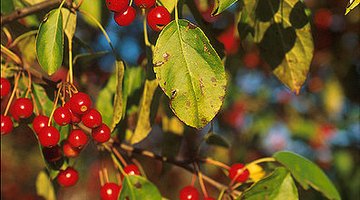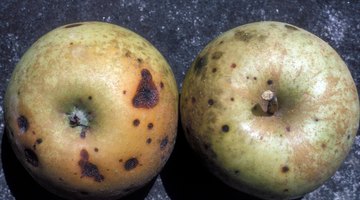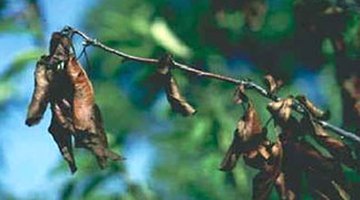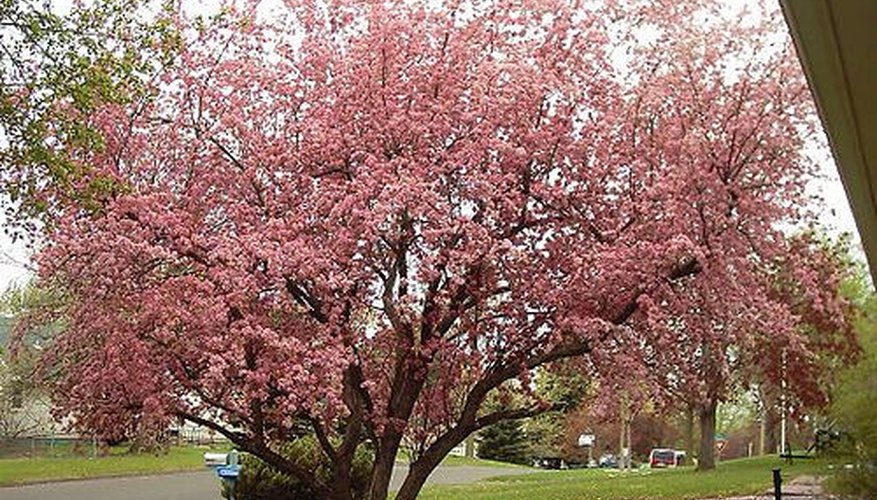Crabapple trees are part of the Malus genus of trees that are native to North America, Asia and Europe with white or pink flowers and small, red apples. Crabapples flower in the spring, but like other plants, are susceptible to various forms of disease stemming from bacteria and fungus.
Cedar-Apple Rust

Cedar-apple rust is a fungal infection that begins in a juniper family of trees, like cedars and junipers, and spreads its spores to apple and crabapple trees. Symptoms include red and yellow leaf spots, bright orange growths on the wood and gelatinous horn growths from the infection on the wood or fruit.
- Crabapple trees are part of the Malus genus of trees that are native to North America, Asia and Europe with white or pink flowers and small, red apples.
- Symptoms include red and yellow leaf spots, bright orange growths on the wood and gelatinous horn growths from the infection on the wood or fruit.
Apple Scab

Apple scab is a fungal disease that occurs in warm, wet, humid areas. The disease leaves black, scabby spots on leaves and fruit. These lesions cause the fruit to crack and leaves to drop.
Frogeye Leaf Spot and Black Rot Fruit Damage

Frogeye leaf spot is a fungal infection causing bark cankers, circular, brown, raised leaf spots and rotting fruit. The infection begins during the warm, wet season when the tree blossoms.
Powdery Mildew

Powdery mildew is a fungal infection occurring when poor air circulation, warm temperatures and high humidity are present. Powdery mildew covers the entire tree in a powdery white, which disfigures leaves and stops new shoots from growing. The fruit has brown, rough patches.
Fire Blight

Fire blight is a bacterial infection that occurs during warm, moist weather when the tree produces blossoms. The telltale sign of the disease is blackened blossoms. The disease can spread to young shoots and branches, and severe infections result in damaged roots.
- Frogeye leaf spot is a fungal infection causing bark cankers, circular, brown, raised leaf spots and rotting fruit.
- Fire blight is a bacterial infection that occurs during warm, moist weather when the tree produces blossoms.
